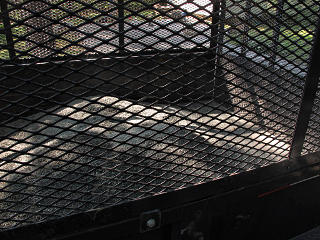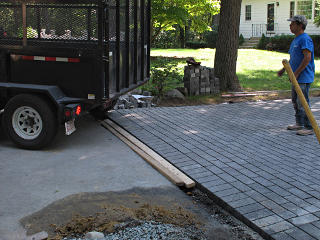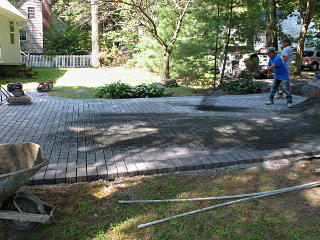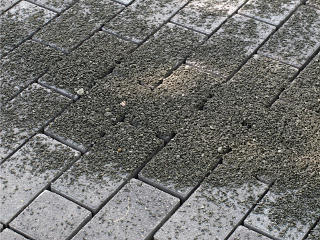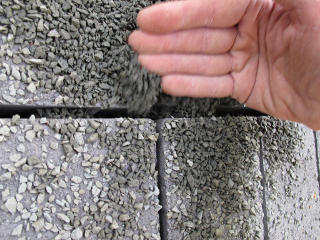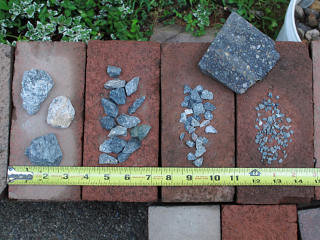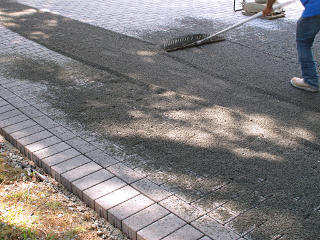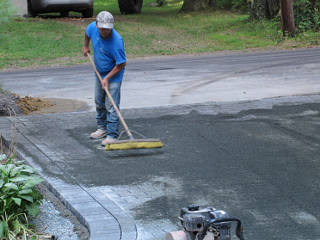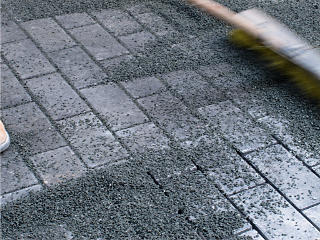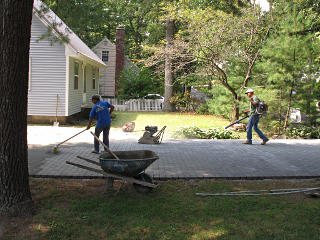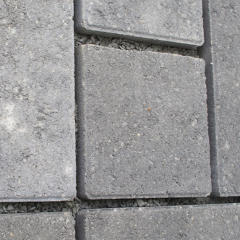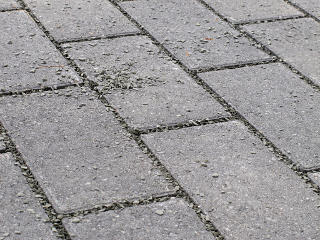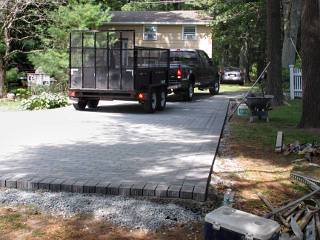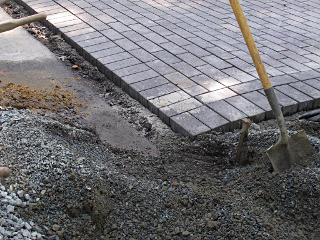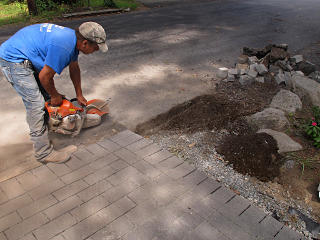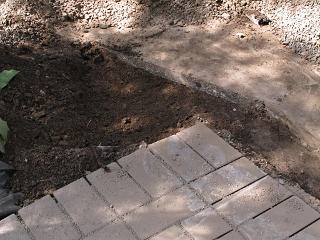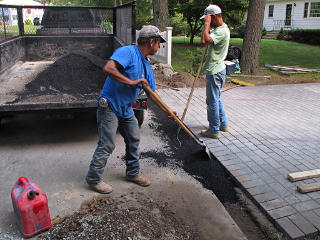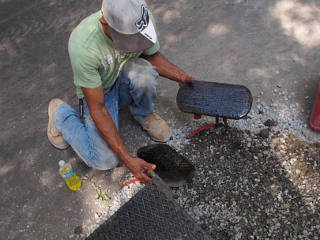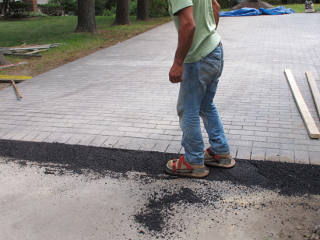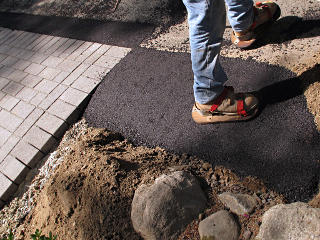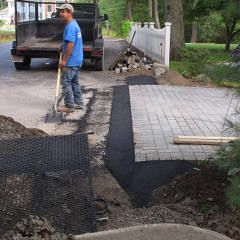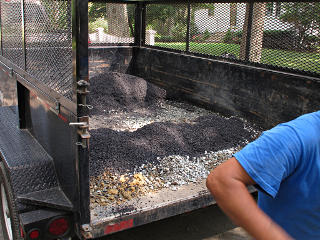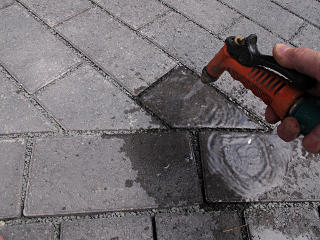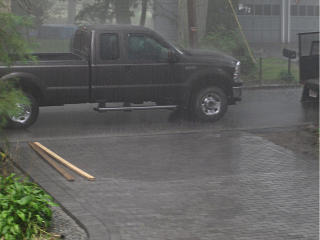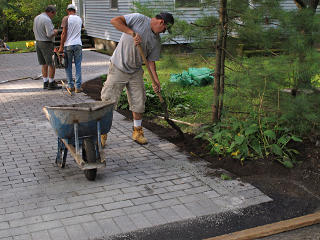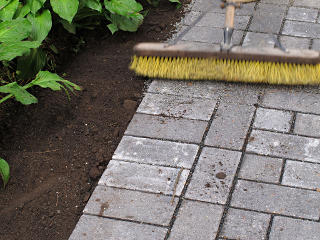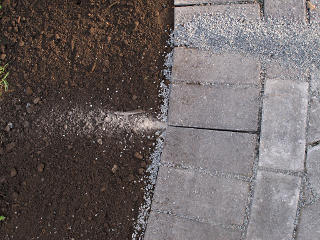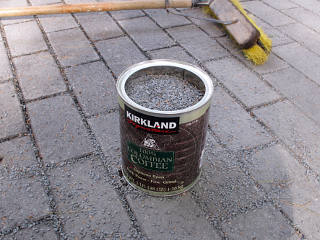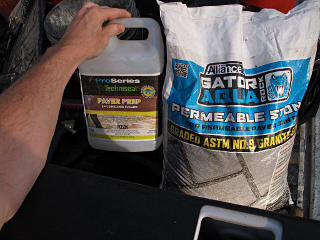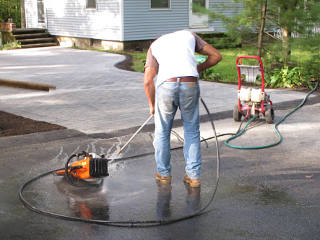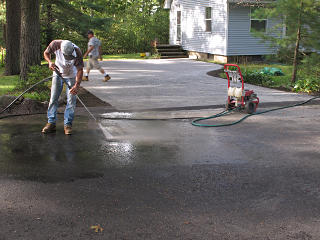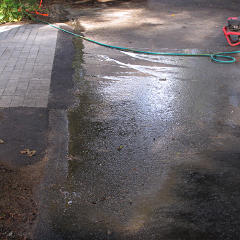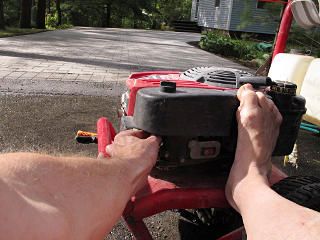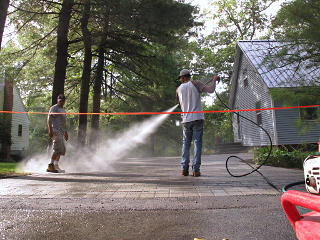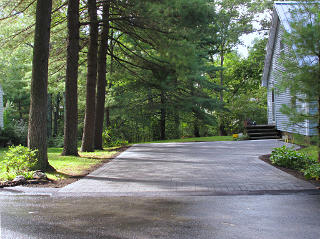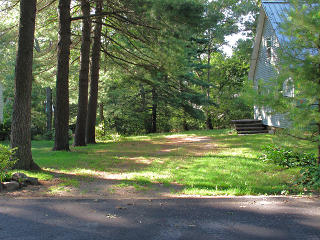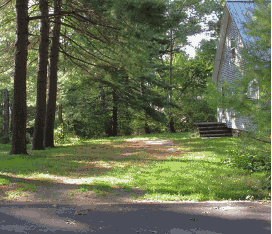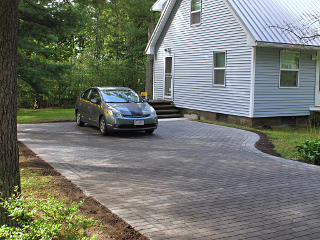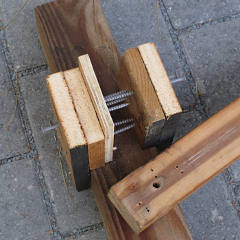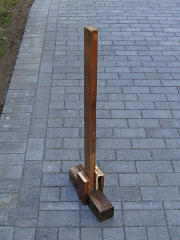| |
The subtlety here is that once the slots are full, sweeping in any
direction tends to pull stone back *out* of them and scatter it across
the surface, where blowing at a shallow angle tends to push the isolated
stuff on top away and leave whatever's trapped in the slots alone. There's
a definite sweet-spot of air velocity that gives the best separation here,
and it gets even more interesting when stuff fallen from the trees
gets mixed into the picture too.
The next stage of compaction was rather magic. It wasn't really to
squash layers down anymore, as plenty of that had happened, it was to
settle the chipstone down as far as it would go into the slots. The
best way to express how this worked is a
video clip
(743K)
from the process. Watch closely right next to the compactor
plate and you see the chipstone simply melt away and vanish down
into the slots.
I wonder how they did this back in the days before vibrational compactors?
Time, I suppose, would eventually tend to settle material as we know
all too well that gravity sucks, but probably far less optimally than
giving it all a good shake like this. A few of the chipstone pieces were
just long enough to bridge across the gaps, particularly where the locking
nubs were, and this would clearly bang those loose and let them fall.
I suppose you could do it by hand with a lot of rubber-mallet work, but
that would be incredibly tedious and possibly leave the pavers more
misaligned than they should be.
|
